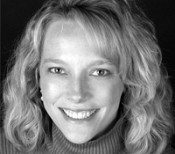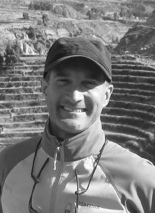Students as Producers in Social Science Courses
 by Julie Lapidot, CFT Student Assistant
by Julie Lapidot, CFT Student Assistant
The following is a summary of a conversation on teaching the CFT hosted earlier this semester, part of our “Students as Producers” theme year. For more ideas on helping students become not only consumers of knowledge, but producers and creators, come to our Celebration of Learning on April 21st.
Aligning with our theme for the year, this panel focused on how faculty members can allow students to produce their own knowledge in the social sciences. Shaul Kelner, Associate Professor of Sociology and Director of Jewish Studies; Leigh Gilchrist, Assistant Professor of the Practice in Human & Organizational Development; and Steve Wernke, Associate Professor of Anthropology shared their ideas on the topic.
 Professor Kelner teaches Sociology 218: Tourism, Culture and Place, among other courses that involve creative writing and experiential learning. This class focuses on the tourist experience – marketing, and sharing of culture. In this class, his students write final research papers that are often published in journals.
Professor Kelner teaches Sociology 218: Tourism, Culture and Place, among other courses that involve creative writing and experiential learning. This class focuses on the tourist experience – marketing, and sharing of culture. In this class, his students write final research papers that are often published in journals.
This was not how he originally designed the class. In his first year teaching it, each student produced a short, 5-minute film to take the concepts from class and apply them to a particular place. An example of this work can be seen here. Professor Kelner found that making these movies was difficult and produced a spectrum of results in terms of quality. Additionally, he found that grading was difficult as he could only provide critiques of the content, not the overall product.
Professor Kelner heard about the Vanderbilt Undergraduate Research Journal, which is a resource to which any undergraduate can submit work in hopes of being published, and he thought there may be an opportunity to use it in his course. Because the video projects were more difficult to manage than Kelner had hoped, he changed the assignments so that students write papers using the concepts learned in class to analyze tourism and social structures in a certain place. Often, these papers have been published in the VURJ.
The grading of these papers is based on content — ability to clearly and concisely incorporate concepts from class– creativity, and accuracy. Kelner is always impressed with the quality of these final papers, and will continue to have students write papers, and submit them to the VURJ.
 In her class, HOD 2510: Health Service Delivery to Diverse Populations, Leigh Gilchrist combines service-learning and classroom instruction. Throughout the semester, Gilchrist’s students work on a project that combines concepts they have learned throughout their HOD education. The project accounts for 10% of their total grade, and aims to give students real world experience delivering health services.
In her class, HOD 2510: Health Service Delivery to Diverse Populations, Leigh Gilchrist combines service-learning and classroom instruction. Throughout the semester, Gilchrist’s students work on a project that combines concepts they have learned throughout their HOD education. The project accounts for 10% of their total grade, and aims to give students real world experience delivering health services.
Some of these projects have been posters disseminating information about how to prevent health problems (i.e. covering your cough, or washing your hands), ways to be healthy (i.e. nutritional tips, encouragement to exercise), and many others. Two of the greatest challenges in the project are, first, creating a product appropriate for the given audience, and second, ensuring the scope and size of the projects are feasible, so that it is completed by the end of the semester.
Gilchrist works with a former graduate student, who is the liaison to the Children’s Hospital, to make many of these projects better integrate learning and community impacts. Gilchrist creates a number of projects for the students to take on before the semester begins. She says this is time-intensive and requires a lot of communication among many parties, but the effort is well worth it. Students do not have time to create a project, get the project proposal approved, and execute the project in the span of a semester. This leads to the second difficulty of such a project—finding the appropriate size. The projects give students hands-on experience working with health groups to accomplish a task, but it also takes a lot of time to finish a project and to manage it well from beginning to end requires significant effort. For example, a booklet describing healthy diet and exercise practices aimed at 3rd graders required students to work with the health organization to craft visuals, text, and other information to be included in the booklet, as well as approval of embedded information and of appropriateness given the age group.
Because this project is not heavily weighted in the grade, Gilchrist chooses to grade them based on effort and circumstance. Each project is unique, and some require students to meet more stipulations than others. Different groups get farther than others. How well the team worked with the organization to meet their mutual goals, effort, and ability to convey health related information all factor into the grade. (For more on HOD 2510, see this 2011 Vanderbilt news article.)
 Our final panelist, Steve Wernke, assigns a semester-long project that asks students to engage in his passions for anthropological data analysis. He teaches Anthropology 280: Introduction to GIS and Remote Sensing, in which students learn how to use certain instruments and data sets to learn more about anthropology. At the end of the semester, to demonstrate their knowledge, students choose a research question, produce research and data through the techniques learned in the class, and present their findings in a poster symposium.
Our final panelist, Steve Wernke, assigns a semester-long project that asks students to engage in his passions for anthropological data analysis. He teaches Anthropology 280: Introduction to GIS and Remote Sensing, in which students learn how to use certain instruments and data sets to learn more about anthropology. At the end of the semester, to demonstrate their knowledge, students choose a research question, produce research and data through the techniques learned in the class, and present their findings in a poster symposium.
Wernke has been very impressed with the results of this project. In the past, he has had students use their specific interests and major foci as research questions. For example, one of his Classical Studies and Anthropology double major students looked at ancient Greek cities and their layouts. Using the GIS and other techniques from the class, she came upon interesting trends in city layout across examples of Greek Civilization.
This project, because it encompasses both course content, prior knowledge (from the Anthropology major) and creativity, is heavily weighted in the course grade. Wernke has always been impressed by the results of this project, and notes that because students get to choose the topic, generally they are much more invested in the final product.
The project itself requires oversight by Wernke to make sure the students are on track and understand what their data means. This requires much of Wernke’s time, but he says that the learning students receive from this project make that investment well worth the effort.
Each of these panelists make their students into producers through a project that incorporates student interests, class curriculum, and real world knowledge or experience. Both the professors and the students believe that these projects define their Vanderbilt experience and allow for hands-on understanding to enforce classroom concepts.

Leave a Response